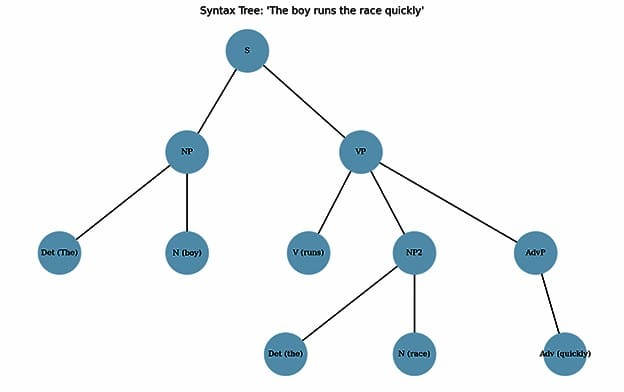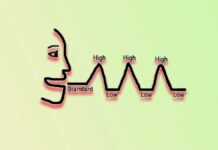The study of phrases and clauses lies at the core of syntax, the branch of linguistics that examines how words are organised into meaningful units. While phrases are groups of words that function as single constituents within a sentence, clauses are larger syntactic units containing both a subject and a predicate. Understanding the distinction and interrelation between these two levels of structure is crucial for analysing sentence formation, grammaticality, and meaning.
Phrases
A phrase is a group of words that functions as a single unit in a sentence but does not contain both a subject and a predicate. It is a syntactic unit built around a head word and its dependents. Phrases cannot stand alone as complete sentences. It cannot convey a complete thought on its own but performs a grammatical role within a larger structure.
Types of Phrases
Noun Phrase (NP) – has a noun (or pronoun) as the head word.
E.g., The tall boy with curly hair is my friend.
(Head noun = boy; modifiers = the tall…with curly hair.)
Verb Phrase (VP) – consists of a main verb and its auxiliaries.
E.g., She is reading a novel.
(Main verb = reading; auxiliary = is.)
Adjective Phrase (AdjP) – has an adjective as the head word.
E.g., The food was extremely delicious.
(Head = delicious; intensifier = extremely.)
Adverb Phrase (AdvP) – has an adverb as the head word.
E.g. He spoke very softly.
(Head = softly; modifier = very.)
Prepositional Phrase (PP) – begins with a preposition and ends with its object.
E.g. She sat on the wooden chair.
(Preposition = on; object = chair.)
Clauses
A clause is a group of words that contains both a subject and a predicate. Unlike phrases, some clauses can stand as complete sentences.
Types of Clauses
Independent (Main) Clause – can stand alone as a complete sentence.
E.g., She enjoys painting.
Dependent (Subordinate) Clause – cannot stand alone; it depends on the main clause.
E.g., Because she enjoys painting, she spends her evenings in the studio.
Subtypes of Subordinate Clauses:
- Noun Clause – functions as a noun.
E.g., What he said made everyone laugh. (Acts as subject.) - Adjective (Relative) Clause – describes a noun, usually introduced by who, which, that.
E.g., The man who lives next door is a doctor. - Adverb Clause – modifies a verb, adjective, or adverb, often introduced by subordinating conjunctions (because, although, if, when, since).
E.g., She left because she was tired.
- Noun Clause – functions as a noun.
Key Distinction: Phrases vs. Clauses
- Phrase: A group of words without subject-predicate. (in the room, very happy)
- Clause: A group of words with subject-predicate. (He is in the room, She is very happy
- Analytical Value: Clauses represent complete propositions, while phrases function as constituents within these propositions.
Syntax Tree Example
“The boy runs the race quickly”.

The sentence (S) splits into a Noun Phrase (NP) (The boy) and a Verb Phrase (VP) (runs the race quickly).
Within the VP, we see another Noun Phrase (NP2) (the race) and an Adverb Phrase (AdvP) (quickly).
Examples in Sentences
Phrase within a sentence:
- The red car (noun phrase) sped away quickly.
- He arrived in the morning (prepositional phrase).
Clause within a sentence:
- I know that she is honest (noun clause as object).
- The book which you gave me (adjective clause) was fascinating.
- She stayed at home because it was raining (adverb clause).
Examples for Practice
Identifying the phrases in: The little girl with a red ribbon sang beautifully.
- NP = The little girl with a red ribbon
- VP = sang beautifully
- AdvP = beautifully
Identifying the clauses in: Although it was raining, the children played outside.
- Main clause: the children played outside
- Subordinate adverb clause: Although it was raining
Structural Analysis
Using a syntax tree (as seen in generative grammar), we can visualise how smaller constituents (phrases) combine into larger structures (clauses). For example, in The boy runs the race quickly, the sentence splits into NP (The boy) and VP (runs the race quickly), the latter containing further phrases.
This hierarchical representation reflects Noam Chomsky’s X-bar theory, where every phrase has a head, and the phrase expands through complements and specifiers.
Relevance in Linguistic Studies
Semantics
Clauses carry propositional meaning, while phrases enrich or restrict it.
Stylistics
Literary writers often manipulate phrase–clause structures to achieve rhythm, emphasis, or ambiguity.
Applied Linguistics
Teaching ESL/EFL requires clarifying how phrases build into clauses to aid sentence construction.
Critical Discourse Analysis
Clausal structures can reveal power relations and ideology in texts.
The distinction between phrases and clauses is fundamental to syntactic analysis. Phrases act as the essential building blocks, while clauses combine these blocks into propositions capable of expressing complete meanings. For postgraduate students, mastering this distinction is vital not only for linguistic theory but also for applied fields such as stylistics, discourse analysis, and language teaching.






























